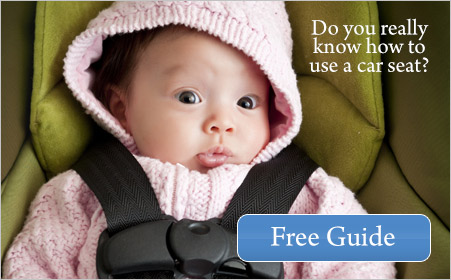
Ready to ride? Here are seven steps to make your bicycle trip this summer safe.
Step One: Make Sure it Fits
Wearing a shoe that isn’t the right size is uncomfortable, and bikes work in a similar way. If you are buying or renting a new bike, make sure that the bike is not too large or small for you, as this could make steering harder to control and cause undue fatigue.
Step Two: Inspections Are Crucial
The last thing any rider wants to happen is to discover malfunctioning brakes while on the road the hard way. Take time before you depart to inspect the brakes, tire pressure, gear shift, and seat adjustment.
Step Three: Take it for a Test Run
If it’s been awhile since you’ve been on your bicycle, or if you’re riding a new bike, it would be wise to take it for a test run. Taking a bike for a test run is similar to taking a car for a test drive. It’s the best way to detect any “kinks” that need adjustment, and to become acquainted again with an old bike if you haven’t ridden in a while. Make sure to take a day to break in a bicycle before taking it on any long trips, and avoid riding a rental for more than a dozen miles to avoid a breakdown. If a rental bike doesn’t feel right, ask for another or just walk; riding a defective rental bike isn’t worth a potential crash.
Step Four: Check Your Helmet for Reliability
The advice that every rider receives, whether they are seasoned or first-time riders, is to always wear a helmet. According to the Insurance Institute for Highway Safety, you are about twice as likely to die in a crash if you’re not wearing a helmet. However, a helmet may not provide adequate protection if it’s old or doesn’t fit. Most helmet brands come in small, medium and large sizes and can also be adjusted for size via a dial at the back of the helmet, so make sure it fits. Additionally, age can weaken the components in a helmet, is you should consider replacing your helmet once every five years, and always replace it if you’ve been in a crash.
Step Five: Dress for Success
One of the most common ways to ruin a bike ride is by dressing inappropriately. Dress in layers, so that you may add or take off clothing to help regulate your body temperature. Baggy pant legs and shoe laces should be stuffed into your shoes to prevent getting caught in the chain. Also, always make sure to bring a backpack or other form of carrying device that won’t impair your control of your bike. If you carry something in your hand while riding a bike, you decrease your control of the bike by 50 percent.
Step Six: Take Inventory
We’ve all had the moment of realizing that we forgot something, and this experience can be an even bigger bummer while on a bicycle. A great way to prevent these situations is to create a checklist of what to bring with you; make a “survival kit.” The most necessary items you should include in your kit are: food (small a preservable foods like jerky and granola bars), water, a fully charged phone, and a first aid kit. Now think to yourself, “What else would I regret not having?” This could include sunglasses, a pair of gloves, duct tape, a tire repair kit, or even some spare cash.
Step Seven: Plan Your Route
When riding a bike, it’s important to always know where you’re going. Map out which routes you should take, keeping in mind where cars are most likely to be concentrated, and what bike paths are available. Don’t forget that in many states bike riders must adhere to that state’s traffic laws, so make sure you’re following the traffic laws when in a different state.
For more tips on biking safety checkout The Importance of Helmet Safety, What to Do After a Bike Accident, or our Bike Safety Checklist.















